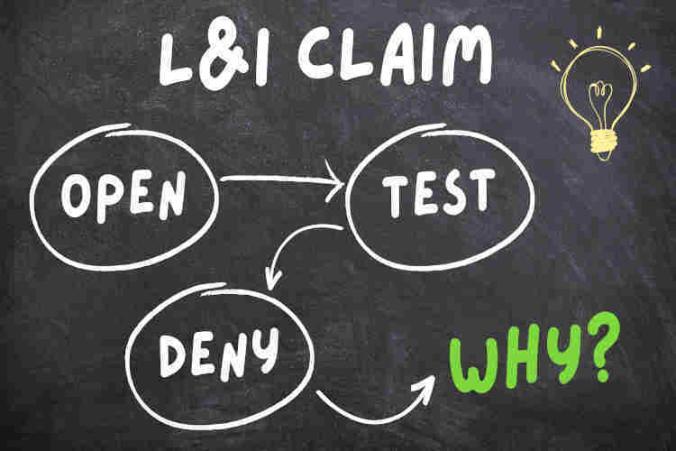Calendar dates can be very important in an L&I claim. In fact, certain dates associated with specific events can impact your L&I claim benefits. In some cases, incorrect dates can even have long lasting negative implications in claims. The purpose of this article is to discuss some of the most important claim dates that work injury claimants must track and remember.
Date of injury in a workers’ compensation claim
The date of injury (DOI) is the date an Industrial Injury occurred. If you were injured at work on a specific day, that is your date of injury. It’s very important that you use the correct date of injury when filling the accident report. This date will also appear in other early claim documents. Personally, I’ve seen circumstances where L&I doubted the validity of the claim because the date of the work injury was wrong. For example, take a workplace injury that occurred on a Friday. Yet, the date of injury in the report form is listed as Saturday. This real-life error caused the employer to question the claim because the worker wasn’t at work on Saturday. One tiny mistake and the injured worker had to spend months convincing the employer and L&I that the injury actually happened on Friday while at work. Not at home over the weekend.
The date of injury is also very important because L&I uses it to calculate wages. Work injury claimants may be eligible to wage replacement benefits like time-loss compensation or loss of earning power. L&I pays these benefits when workers cannot work after their work injury. Or, when workers can only work in limited capacity. To determine compensation, L&I looks at the wages on the date of injury. Therefore, an accurate date of injury is important. It’s imperative that L&I calculates wages correctly and accurately.
Date of manifestation
The date of manifestation (DOM) is the date associated with the onset of an occupational disease claim. Under the law, the date of manifestation is “the date the disease required medical treatment or became totally or partially disabling, whichever occurred first”. The date of manifestation is set exactly according to this definition. It doesn’t matter when you actually filed your L& claim.
As with industrial injury, establishing a correct date of manifestation is very important. I’ve seen instances where L&I questioned a claim because the date of manifestation on the form was long after the first treatment date. This caused L&I to suspect that the work injury claimant wasn’t honest. It also opened the door for questions about whether the condition was actually an occupational disease. Or, for example, something that occurred naturally regardless of work activity.
If L& rejects a claim on this basis, it puts work injury claimants in a bad position. They end up having to fight an uphill battle to get the claim allowed. Using the correct date of manifestation from the beginning can eliminate this risk.
Incorrect dates can impact your claim benefits
The date of manifestation can also impact monetary benefits. Here are a few examples. Nearly every year, L&I sets a “compensation schedule”. For instance, say that the date of manifestation is in 2010. In addition, say that the work injury claimant is ultimately eligible for a permanent partial disability award. Eventually, L&I will pay the worker according to the PPD rates for 2010.
Another example is wage replacement benefits. Let’s assume that the work injury claimant is working when the industrial disease requires treatment. Then, L&I will base the wage replacement compensation on the monthly wage paid on that date. However, if the work injury claimant wasn’t employed at the date of manifestation, then L&I calculates the compensation using the last monthly wage of earnings. That is, so long as the worker didn’t retire voluntarily. In fact, voluntary retirement disqualifies work injury claimants from receiving wage replacement benefits.
L&I claim dates associated with letters and communications
Many L&I claim deadlines are a function of the date in which L&I sends out a document or notification. For example, if L&I sends an order, you have 60 days from the date you receive the order to file a protest or appeal. If you don’t file a protest within 60 days, then the order becomes final and binding. After that, you can no longer challenge the decision.
By law, L&I must send orders to work injury claimants at their last known address “as shown by the records of the department”. Hence, L&I considers the order delivery as “complete” when the mail arrives at the work injury claimant’s last known address. It’s important to note that workers can rebut this presumption. To do so, you must present evidence and show you didn’t receive the order. However, no one ever wants to be in this position. In my opinion, the best way to ensure you’re calculating deadlines properly is to simply write the date of receipt on every document. That’s how law firms do it. Every time a piece of mail comes in the door – we date-stamp it. Having a similar standard practice can help throughout your workman’s comp claim.
Terminal dates and claim reopening
Terminal dates are important when trying to reopen a claim. There are two important terminal dates. Both play a role during the claim reopening application. The first terminal date (called T1) is the latter of: (1) The date L&I closed the claim; or (2) The most recent date L&I denied a reopening application. The second terminal date is called T2. It is the most recent date when you filed an application to reopen the claim. Both T1 and T2 dates can change over time.
Let’s go over an example. A work injury claimant suffered an injury on the job on 1/1/2010. L&I allowed their claim on 1/5/2010. Later, L&I closed the claim on 12/31/2015. The worker applied to reopen the claim on 1/1/2016. In turn, L&I denied the reopening application on 2/1/2016. Here, the first terminate date is 12/31/2015. The second terminate date is 2/1/2016. Further, assume that the worker does not protest or appeal the denial. Instead, say the worker files a new application to reopen on 1/1/2017. Additionally, say that L&I denies the new reopening application on 2/1/2017. After that, the new T1 will be 2/1/2016 and T2 will be 2/1/2017.
Terminal dates are important in reopening applications. For L&I approval, you must show that claim-related conditions got worse between the terminal dates. Furthermore, you must show the need for further treatment or an increase in disability. So, it’s extremely important for both work injury claimants and their medical providers to understand the terminal dates.
L&I claim closing date
When L&I closes a claim, they send you a “Notice of Decision”. Sometimes, L&I sends a final “Payment Order” instead. Either way, the L&I claim closing date refers to the date that appears on that letter. This is one reason it’s very important to always read L&I orders completely and carefully.
When L&I decides it’s time to close your claim, they must issue their decision in writing. In it, L&I must clearly state that the claim is closed. Like any decision, to protest or appeal it, you must submit a written notice within 60 days. If L&I receives the protest in time, then L&I has to issue a new order. If L&I affirms its decision to close the claim, then the date on the new order becomes the claim closing date. Technically, a claim isn’t closed until 60 days after the written notice of closing arrives to the worker.
Sometimes, people don’t understand that L&I must communicate claim closure in writing. They mistakenly think that if a doctor tells them that treatment concludes, then the claim is closing. Other times, workers think that if a claim manager tells them the claim is closing, then it’s closed. In fact, I’ve talked to work injury claimants who believed their claims closed for years. Only to find out that their claims are still open. During this entire time, workers skipped medical treatment and benefits.
Appointment dates – Don’t forget your L&I appointment!
By far, the most important date(s) to remember in your L&I claim is your appointment date. Work injury claimants miss appointments way too frequently. Sure, unexpected issues and emergencies arise from time to time. However, it’s unacceptable to forget and ignore appointments repeatedly.
Whether it’s an appointment with your attending provider or IME appointments. Whether we’re talking about physical therapy, consultation appointments, or vocational meetings. It doesn’t matter. There is no justification to miss appointments. As such, it’s critical to know the date and attend your appointment on time. If you repeatedly miss appointments, it’s one surefire way to interrupt your L&I claim progress. Often, it will result in suspension of benefits. There is nothing more frustrating than finding out a work injury claim has gone down the toilet simply because the claimant failed to attend appointments.
I know a claim can be difficult. I’m well-aware it can be scary to manage all the appointments and administrative responsibilities. However, if your claim is important to you, know your appointment date and show up. Unless you have a very good reason for missing it.


